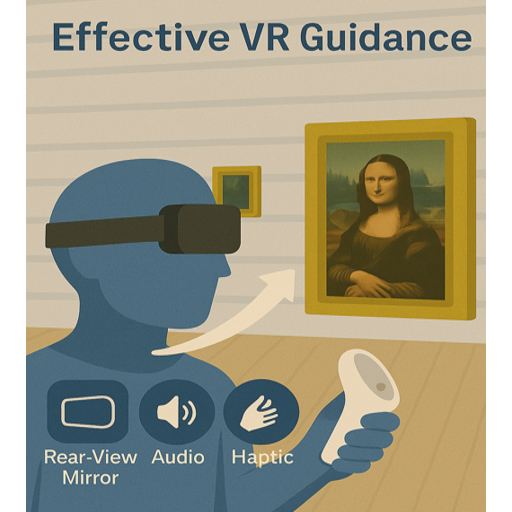
A design challenge in virtual reality (VR) is balancing users’ freedom to explore the virtual environment with the constraints of a guidance interface that focuses their attention without breaking the sense of immersion or encroaching on their freedom. In virtual exhibitions in which users may explore and engage with content freely, the design of guidance cues plays a critical role. This research explored the effectiveness of three different attention guidance cues in a scavenger-hunt-style multiple visual search task: an extended field of view through a rearview mirror (passive guidance), audio alerts (active guidance), and haptic alerts (active guidance) as well as a fourth control condition with no guidance. Participants were tasked with visually searching for seven specific paintings in a virtual rendering of the Louvre Museum. Performance was evaluated through qualitative surveys and two quantitative metrics: the frequency with which users checked the task list of seven paintings and the total time to complete the task. The results indicated that haptic and audio cues were significantly more effective at reducing the frequency of checking the task list when compared to the control condition while the rearview mirror was the least effective. Unexpectedly, none of the cues significantly reduced the task-completion time. The insights from this research provide VR designers with guidelines for constructing more responsive virtual exhibitions using seamless attentional guidance systems that enhance user experience and interaction in VR environments.